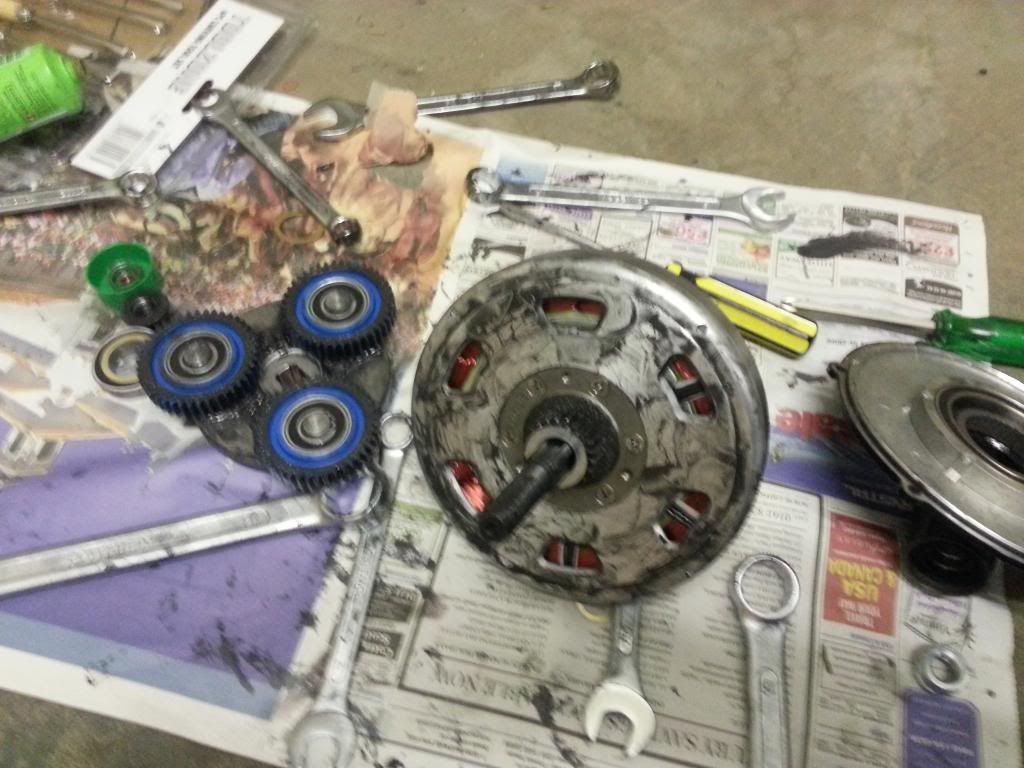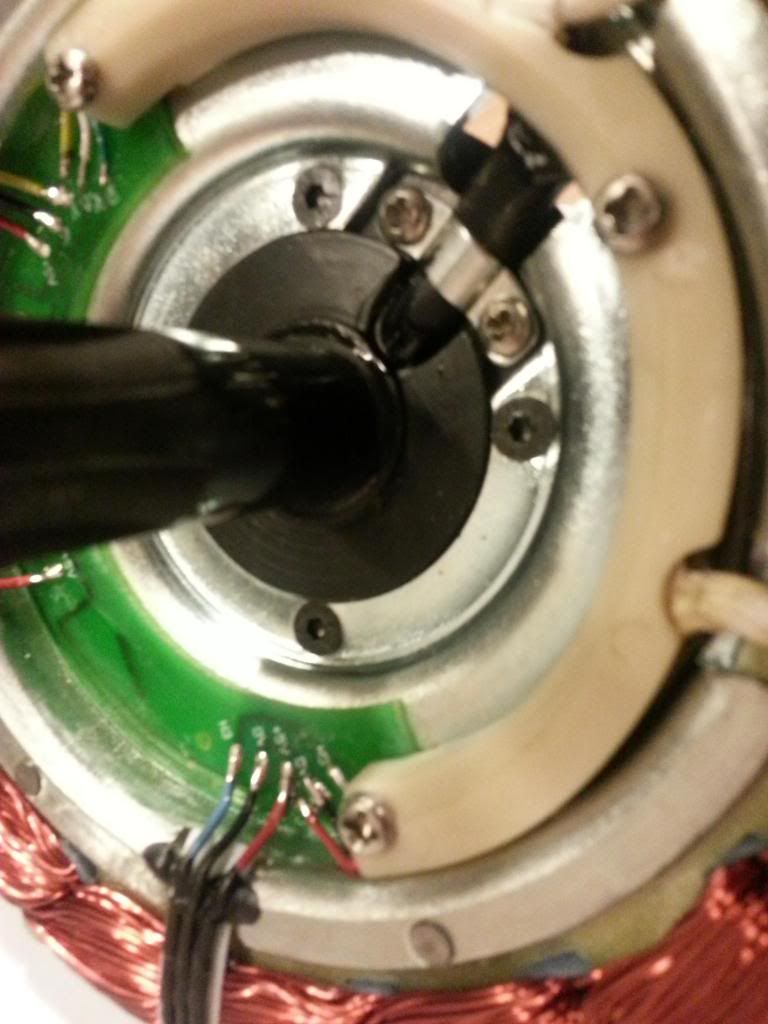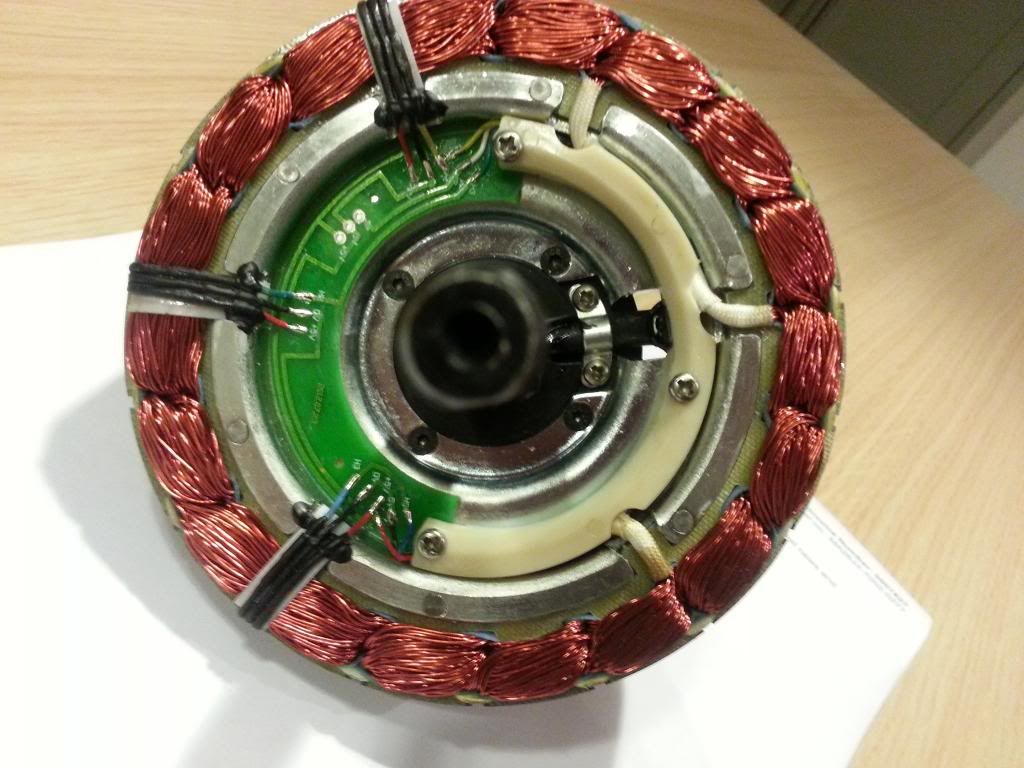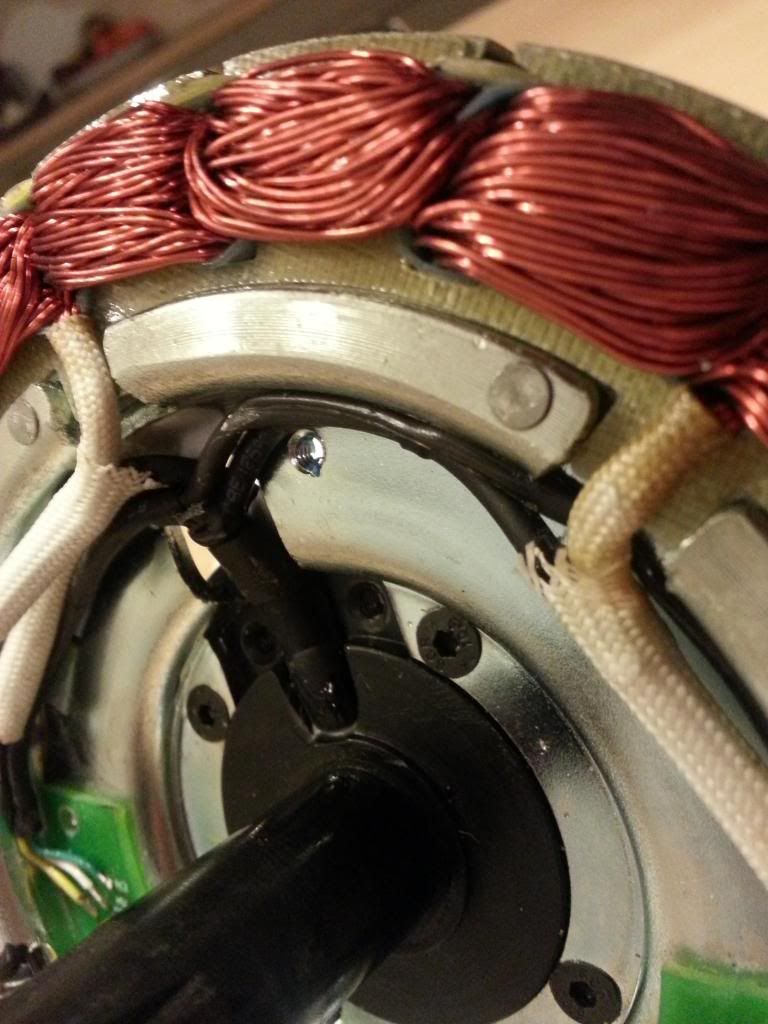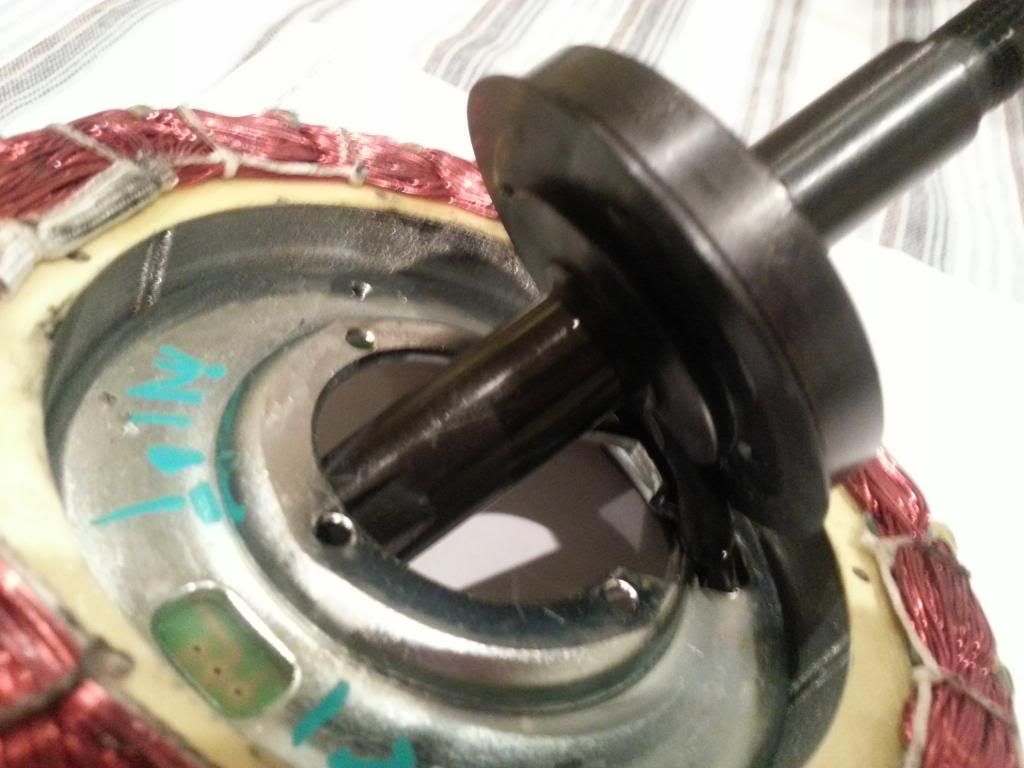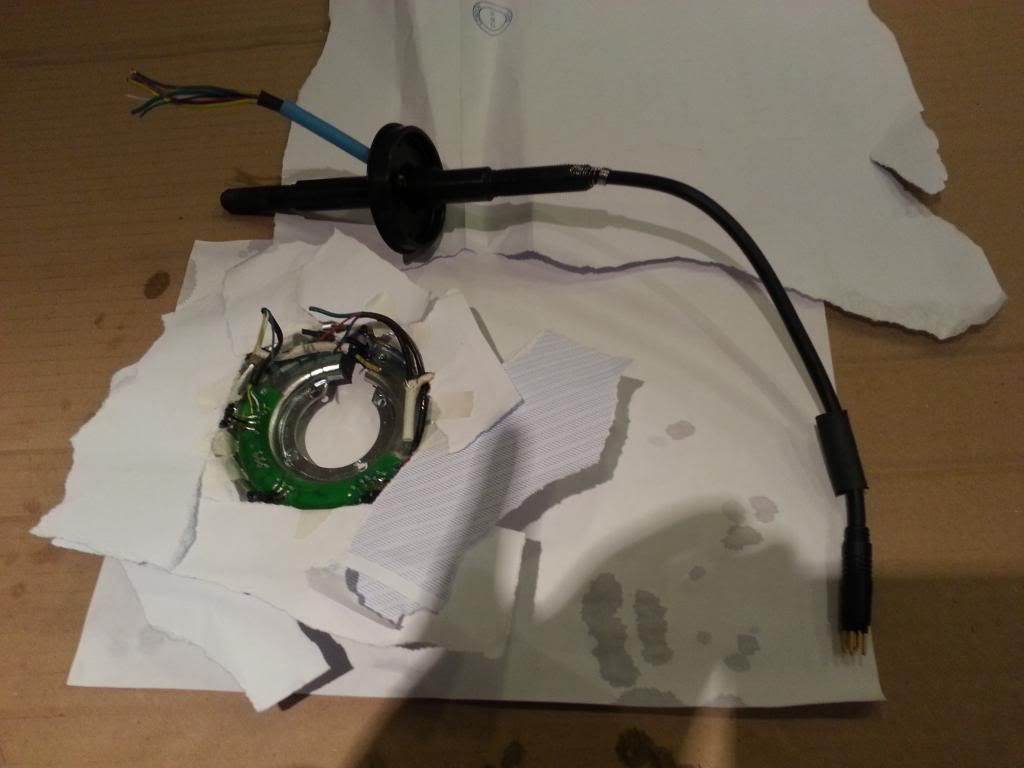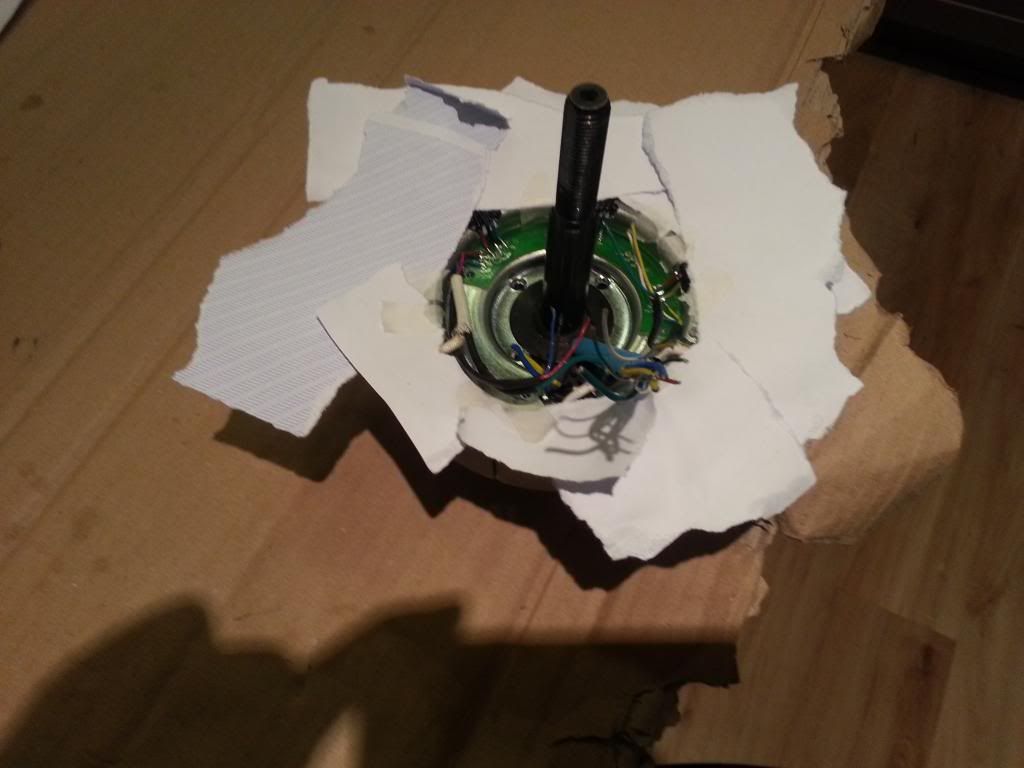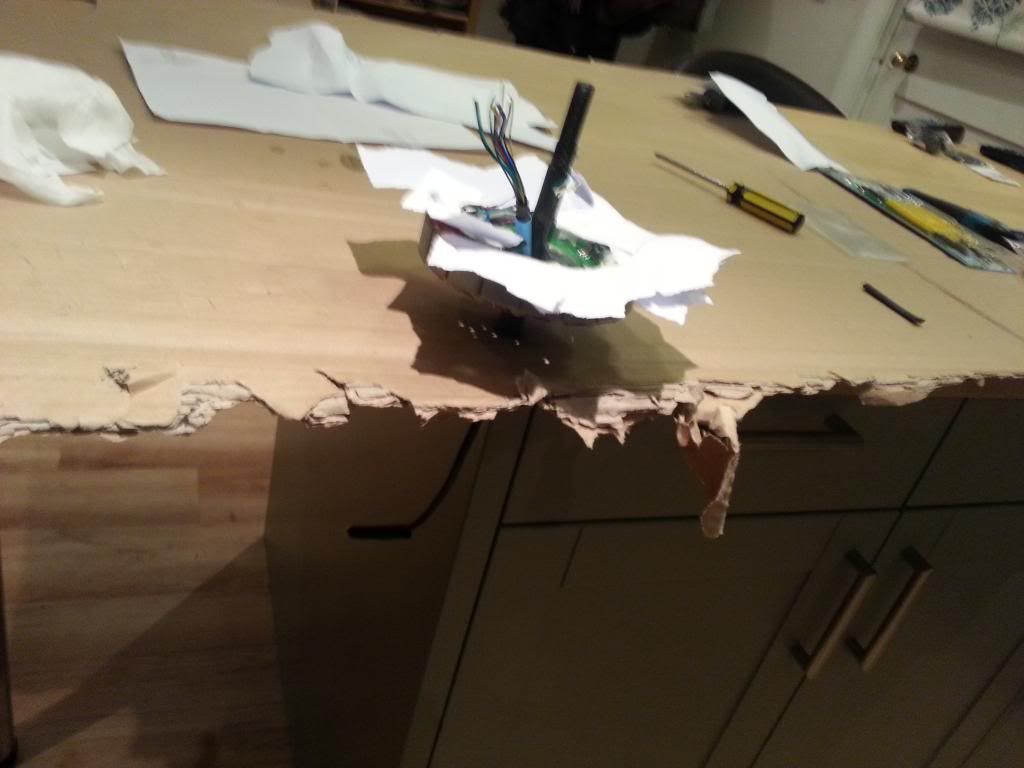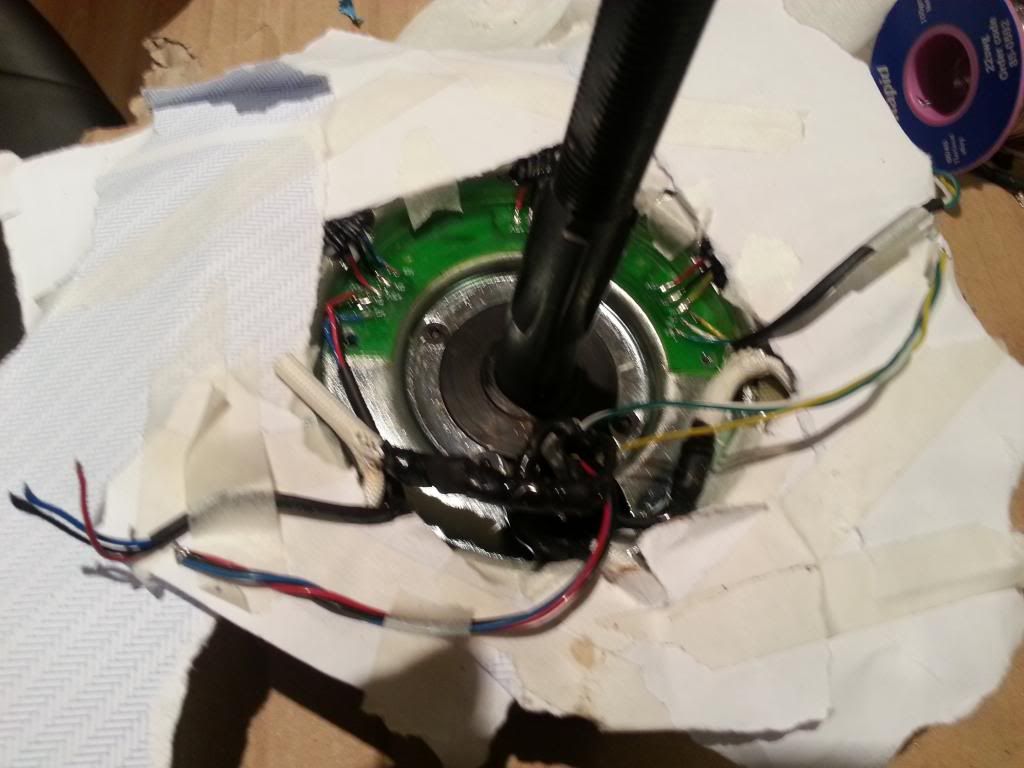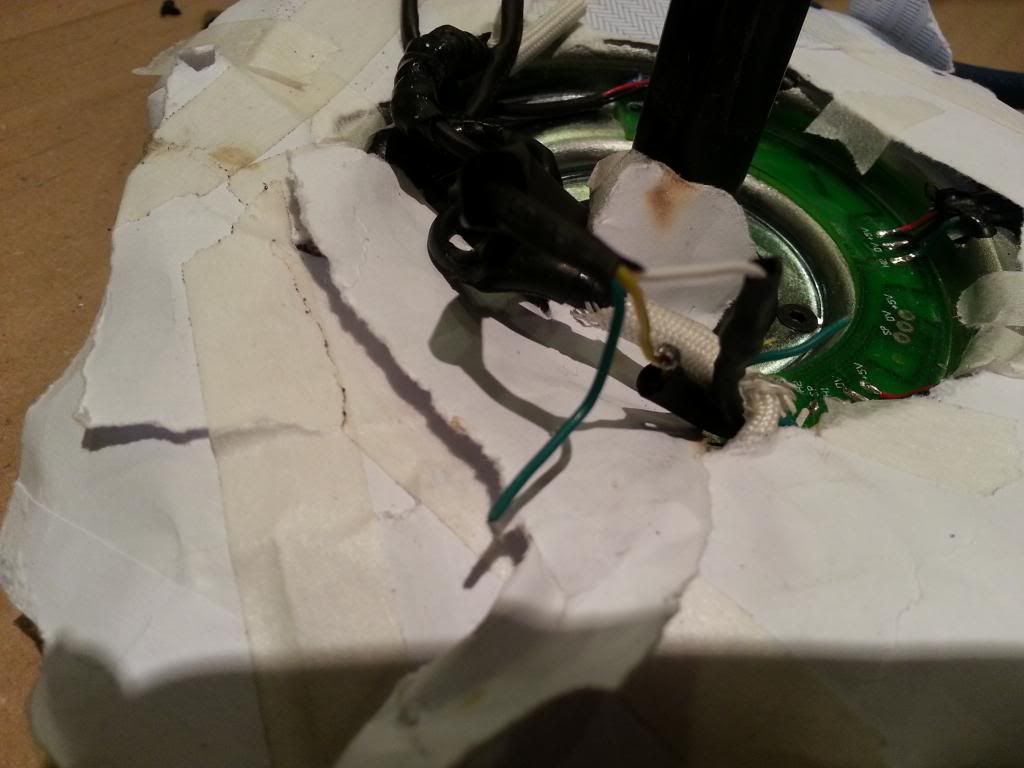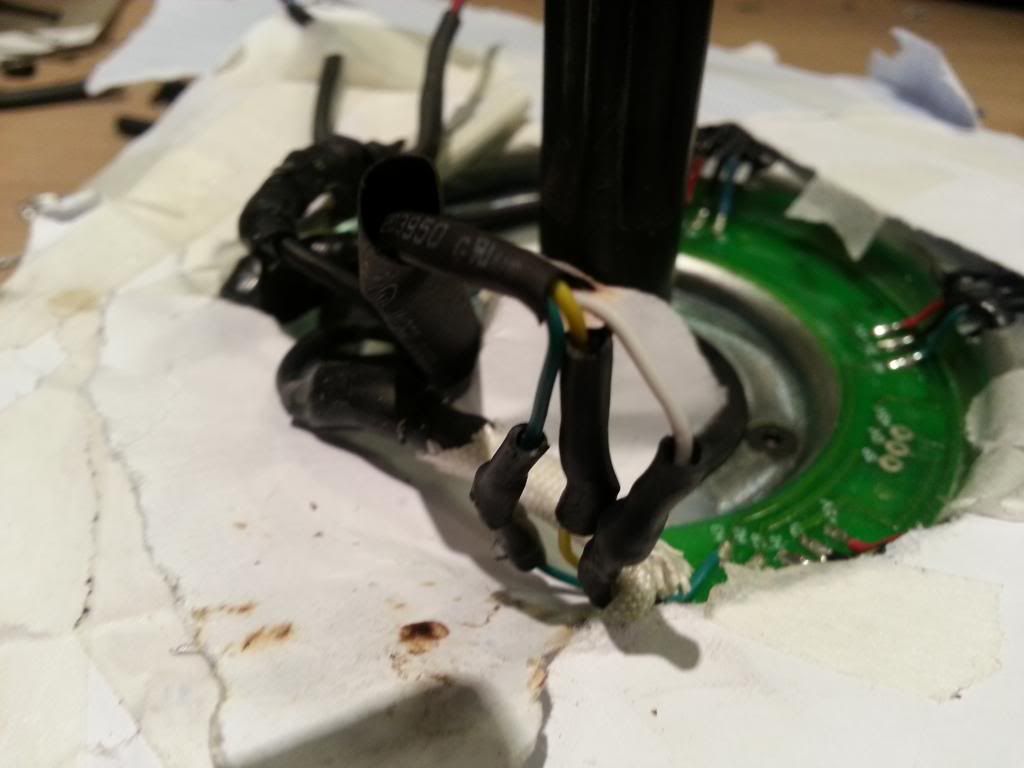D
Deleted member 4366
Guest
You're getting a bit mixed up. I don't think anybody said tap the nut, but here it is again:
Place the motor on blocks or whatever so that it's supported on the side-plate and hanging in the air.
Tap the axle on the spline side and the motor will go towards the floor. It'll probably go a bit at a time, then suddenly drop, so be ready to catch it.
If the axle end goes down to the end of the spline and the motor still hasn't dropped, then you need a drift (bar or large bolt or something) to knock it through the spline.
If you want/need to remove the clutch:
Undo the nut on the axle opposite side to spline
Slide off clutch with gears. Look out for a key on the shaft. Don't lose it. Some shafts havve a spline rather than a key.
Place the motor on blocks or whatever so that it's supported on the side-plate and hanging in the air.
Tap the axle on the spline side and the motor will go towards the floor. It'll probably go a bit at a time, then suddenly drop, so be ready to catch it.
If the axle end goes down to the end of the spline and the motor still hasn't dropped, then you need a drift (bar or large bolt or something) to knock it through the spline.
If you want/need to remove the clutch:
Undo the nut on the axle opposite side to spline
Slide off clutch with gears. Look out for a key on the shaft. Don't lose it. Some shafts havve a spline rather than a key.




